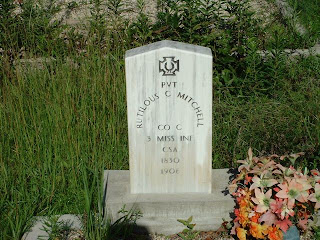At 4:30 a.m. on April 12, 1861, General Pierre Gustave Toutant Beauregard gave the order to open fire on Fort Sumter. Thus began the war that pitted American against American and brought destruction to many of the southern states.
This year we are remembering the 150th anniversaries of the events of 1861 and how our country was torn apart during the next four years. Divisions were created and wounds opened, some of which have yet to heal. In 1964, when this boy from St. Louis, Missouri married a beautiful girl from south Mississippi her grandmother almost disowned her. Her grandmother’s father-in-law was a Confederate veteran of the Army of Tennessee and had fought beginning in Shiloh and ending with his capture at Franklin. The years have been kind to this Missouri boy and the only thing that is keeping him from being considered a “native Mississippian” is that my grandfather was not born or raised in Mississippi. August and September mark the anniversary of the organization of two companies of Confederate soldiers In South Mississippi.
On 1 August 1861, a group of men were organized and mustered into State Militia Service in Mississippi at the small coastal town of Shieldsboro (now known as Bay St. Louis, MS). John J. Bradford (a lawyer) and some of his friends had enlisted a group of men from the Gainesville, MS area in answer to Gov. Pettus’ call to arms following Fort Sumter. The group was known as the “Gainesville Volunteers” and became Company G of the Third Regiment Mississippi Infantry. Originally stationed on the Mississippi Coast they would later see action at Vicksburg, Jackson, and Atlanta.
On 17 September 1861 another group of men enlisted in Covington County, Mississippi to fight the expected invasion of their homeland. They became known as the “Covington Rangers” under the leadership of Captain John T. Fairley. Most of the men in this group were from Mt. Carmel, Jaynesville and the surrounding area of south Mississippi. Mustered into State Service in Shieldsboro, MS they became Company I of the Seventh Regiment Mississippi Infantry. Originally stationed on the Coast at Camp Clark with the Third Regiment they were ordered to Tennessee and fought at Shiloh with General Albert Sidney Johnston and General Beauregard. Following Shiloh and Corinth the Seventh went with General Braxton Bragg and served with the Army of Tennessee until its surrender in April, 1865.
Another confederate company of interest was also enlisted from the same general area as the Gaines Volunteers. They became Company C, 38th Regiment, Mississippi Infantry. Since they did not muster into service until March, 1862 we'll wait untill March, 2012 to discuss their enlistment anniversary.







